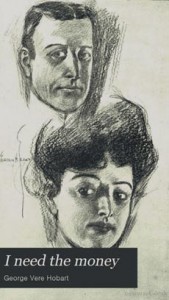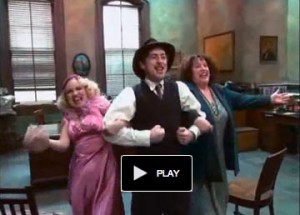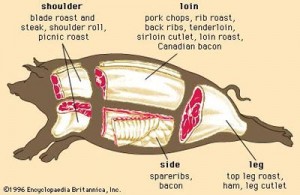All of the above idioms speak to the same thing. They help describe the experience of living (or aspiring to live) a life of leisure and luxury. Being well situated. Having it made.
But where did these expressions come from? And who was Reilly (or Riley) anyhow? Who indeed?
THE WONDERFUL LIFE OF MR. REILLY

The excellent website Phrase Finder offers a pretty definitive history of the phrase. In America, it seems by the 1880s, “Reilly” had become a generic moniker for your average Irish-American male. In 1883, the then famous vaudeville singer and comic Pat Rooney popularized a song titled Is that Mr. Reilly, which included this chorus:
Is that Mister Reilly, can anyone tell?
Is that Mister Reilly that owns the hotel?
Well, if that’s Mister Reilly they speak of so highly,
Upon me soul, Riley, you’re doing quite well.
The above verses, along with at least one other song of that era, associated the fictional character of a “Mr. Reilly” with the idea of wealth and comfort.
But again, according to Phrase Finder, it wasn’t till 1911 that the actual phrase “living the life of Riley” appeared in print. By1918, after America’s entry into World War I, the expression became popular in the military, particularly among Irish-American doughboys. By 1919, perhaps through their contact with American servicemen, Brits were so familiar with the expression “living the life of Reilly” that Harry Pease, a popular British music hall entertainer, used it in his song My Name is Kelly in the verse:
Faith and my name is Kelly, Michael Kelly,
But I’m living the life of Reilly just the same.

Whole new generations were introduced to the phrase when actor William Bendix starred as Chester A. Riley in The Life of Riley, first in a radio series (1944-1951), then in a movie (1949) and finally in a TV series (1953-1958). In the ongoing comedy Bendix played Riley as a lovable lug with an enduring Brooklyn accent who worked on the assembly line at a California aircraft plant.
The focus of each show was always on the various domestic disasters Riley bumbled into, and usually each show ended with Riley uttering “What a revoltin’ development this is!” This line soon became a catch phrase at the time.
Actually, when you think about it, Riley’s character was living a pretty good life. After all, he was part of that generation that had grown up in the rough and tumble environment of the tenements of Brooklyn, that had endured the Great Depression, and had survived World War II. And now according to the plotline, Riley was living the American blue-collar dream, with a good-paying union job in the Sunshine State and surrounded by loving friends and family.
Sounds like at least one version of “Living the Life of Reilly” to me.
LIVING ON EASY STREET
The expression “Easy Street” first appeared in print in 1902, in the novel It’s Up to You, wherein it was said of a very wealthy character that he “could walk up and down Easy Street.” For those of us who believe you can find out about everything and everybody on the web, very little appears about the above-mentioned book or its author, George Vere Hobart (1867 – 1926).

But According to IMDB, Hobart wrote more than fifty plays and librettos for big deal productions such as the Ziegfeld Follies and collaborated with big Broadway names, among them the legendary composer and songwriter Cole Porter.
Hobart also wrote for silent films and had dozens of book titles to his name. Judging by the titles of many of his works – Go to It!, Beat it! Skiddoo!, Jimm Hickey: a Story of One Night Stands, I Need the Money, Come on, Charlie – there seems to be the hint of a brisk, tangy modernity about his writings, many which are by now more than a hundred years old.
In short, Hobart was both in touch with and helped create the pop culture of his time, and if he didn’t coin the term “Easy Street,” you can be sure he helped popularize it.

Of course no discussion of the term “Easy Street” would be complete without viewing Alan Cumming, Kathy Bates, and Kristin Chenoweth belt out what could be considered the national anthem of that desired boulevard.
HOGALICIOUS!

Your neighborhood butcher could probably tell you sooner then your nearby etymologist about the origin of the expression “living high off the hog.” The top of the pig, the loin, contains the best cuts of meat – its where we get pork chops and pork roasts, and if you want to extend the choice real estate of the pig a little further on and down, you can include the top part of the hind legs, in other words the ham part of a pig.
Of course, these tender cuts are also the more expensive cuts of pork, and anyone who could regularly afford them could be said to be living (or eating) “high off the hog” and have the money to do so.

It sounds so antique that you’d think the expression “living high off the hog” was coined during the Middle Ages. But in fact, according to the Stone Barns Center for Food & Agriculture, “the origin of the expression itself however can only be traced back to 1920, when the earliest printed version showed up in a New York Times article and was attributed to the American Institute of Meat Packers.”
Well, I guess there always has to be a first time for first citations.
Now you’ve learned the stories behind three old-time idioms concerning the good life. What is sad is that people don’t really use these expressions anymore, unless they want to appear colorful or arch. But what’s even worse, they aren’t creating new ones as replacements.
IDIOMS, A POOR MAN’S POETRY
Idioms can be sly. They have a history. And they can pack more undertones and overtones of meaning than any unadorned statement can. I guess figures of speech get in the way of today’s direct style of communication; they don’t fit in a 140-character world.
And to that, all this self-confessed old fogey can say is ”SMH” (a texting acronym for “shaking my head,” indicating disappointment).